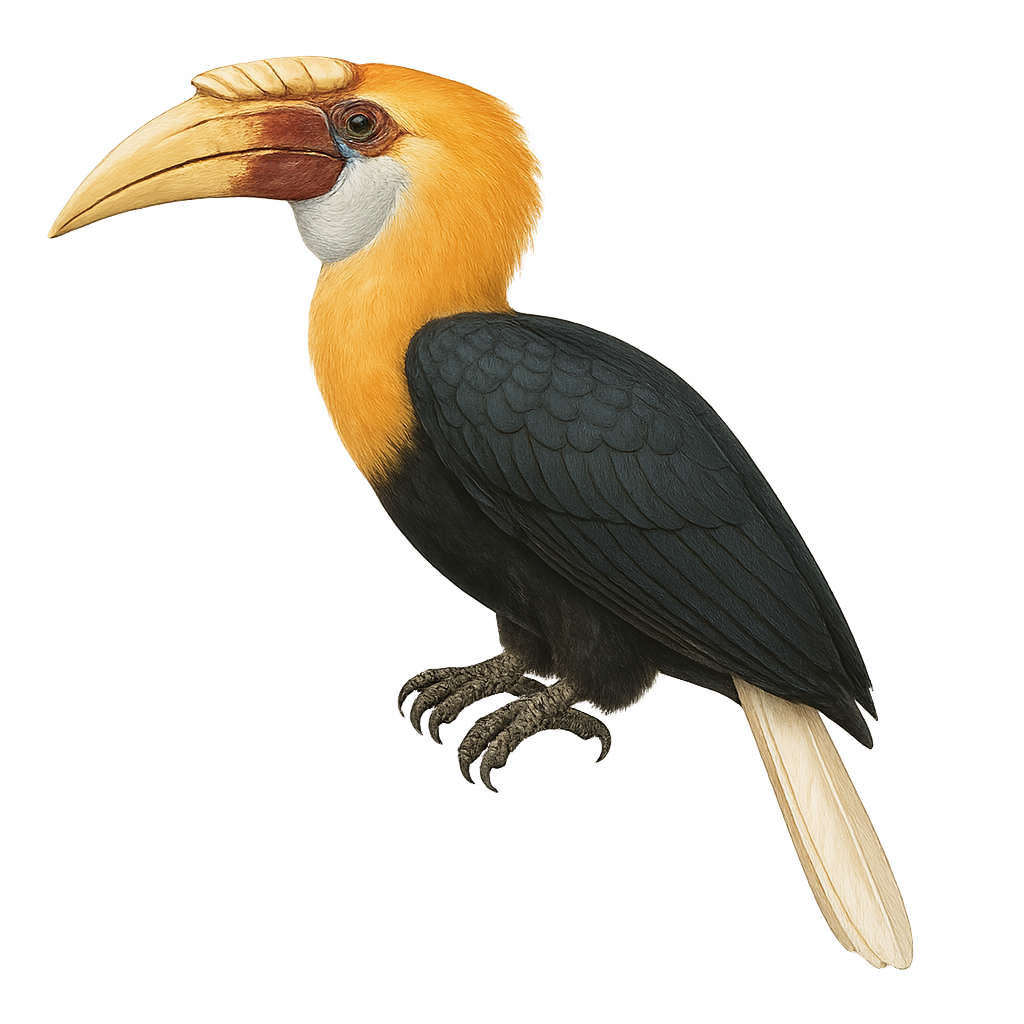Your wildlife photography guide.
Explore the blyth's hornbill in detail, study its behavior, prepare your shots.
Where to observe and photograph the blyth's hornbill in the wild
Learn where and when to spot the blyth's hornbill in the wild, how to identify the species based on distinctive features, and what natural environments it inhabits. The WildlifePhotographer app offers tailored photography tips that reflect the blyth's hornbill’s behavior, helping you capture better wildlife images. Explore the full species profile for key information including description, habitat, active periods, and approach techniques.
Blyth's Hornbill
Scientific name: Rhyticeros plicatus

IUCN Status: Least Concern
Family: BUCEROTIDAE
Group: Birds
Sensitivity to human approach: Suspicious
Minimum approach distance: 10 m
Courtship display: February to April
Incubation: 38-40 jours
Hatchings: March to May
Habitat:
Tropical forests, mangroves, wooded savannas
Activity period :
Primarily active during the day, with peak activity in the morning and late afternoon.
Identification and description:
The Blyth's Hornbill, or Rhyticeros plicatus, is a striking bird known for its large size and distinctive plumage. It features a massive, curved bill often adorned with bright colors. Males and females exhibit marked sexual dimorphism, with males typically having larger bills and more vibrant colors. This bird is primarily arboreal, found in the tropical forests of New Guinea and surrounding islands. It plays a crucial role in seed dispersal, aiding forest regeneration. The Blyth's Hornbill is also known for its powerful and noisy flight, often seen in small groups.
Recommended lens:
400mm – adjust based on distance, desired framing (portrait or habitat), and approach conditions.
Photography tips:
To photograph the Blyth's Hornbill, it is advisable to use a telephoto lens of at least 400mm to capture detailed images without disturbing the bird. Since it is often perched in trees, try to find a high vantage point for a better angle. Be patient and wait for it to land, as its flight is fast and noisy, making in-flight capture challenging. Opt for times of the day when the light is soft to avoid harsh shadows on its plumage.
The WildlifePhotographer App is coming soon!
Be the first to explore the best nature spots, track rutting seasons, log your observations, and observe more wildlife.
Already 1 429 wildlife lovers subscribed worldwide

